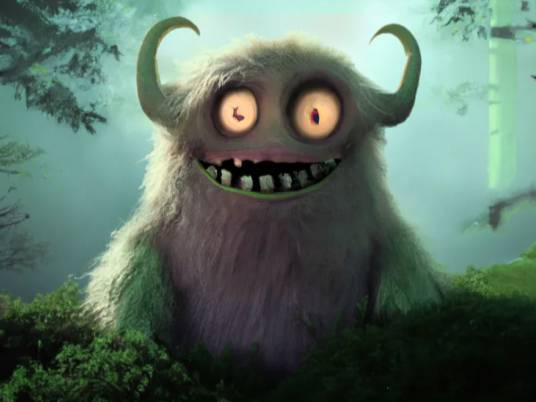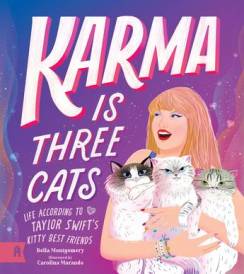AI will transform each role in the animation industry

Snapshot from Critterz, first animated short film 100% designed with AI visuals
With character development, rotoscoping, personalized animated movies and shows, AI is set to change the animation industry not only for creators, but also for the viewers.
According to a report by Market.US, the market value of generative AI in animation is projected to skyrocket from $900 million to $17 billion by 2032. The report shows that over 60% of animation studios are either looking into or have already started using generative AI in their production processes. This widespread use highlights how the industry sees generative AI as a game-changer for traditional production methods.
"AI will transform each role in the animation industry. The gene is out of the bottle and it won't return back inside. From generating initial concepts to final touches, AI empowers artists and streamlines workflows. It won't steal jobs from people though, but provide them with the tools to make their work in animation more efficient, alleviate them from redundant tasks, and allow them to focus on more creative aspects," stated Simona Vasytė, CEO of Perfection42, a company that specializes in customizable, predictive AI solutions.
Simona also shared how the animation industry stands to benefit from the latest tech, offering the top four use cases for AI implementation.
1. Character Development
"In animation, character development is a long, detailed process. It's not like casting actors for a film, it's much more involved. Characters change and grow over time as animators tweak their looks and personalities to fit the story better. AI is transforming this process," started off Vasytė.
It helps animators by quickly generating character designs based on detailed descriptions and feedback. It does not mean these are final designs as they need a human touch, however, they serve as a kick-off point.
For instance, AI can take a rough script and create different character versions, saving time and allowing more creativity.
"AI can enhance characters by adapting to changes in the script and mood of the story. If the script changes or a scene requires a different emotional tone, AI can update the character's outfit, facial expressions, and other details to match. This makes it easier for animators to keep the characters consistent and relevant throughout the story, enhancing the overall narrative without losing any creative touch," concluded Vasytė.
2. Rotoscopy
AI-driven rotoscopy is advancing animation by automating the tedious task of tracing over live-action footage frame by frame. First and foremost, this technology ensures precision.
AI-assisted rotoscoping tools can significantly speed up the process of creating masks or mattes for objects in video frames, which is essential for removing backgrounds. It can also facilitate the creation of complex animations and integrate CGI with live-action.
For instance, an AI-driven rotoscoping tool was used in the Mandalorian show to create the realistic movement of the character Grogu (aka Baby Yoda). This technology helped bring the beloved character to life with incredible detail and fluidity.
"AI-powered rotoscoping tools mark just the beginning of AI's influence on animation. We foresee animation achieving new heights of realism and personalized content tailored to audience preferences, enriching the creative process. Animators will still be essential for storytelling and guiding AI outputs, but integrating AI into animation workflows promises quicker production times, greater accessibility, and improved collaboration," elaborated Vasytė.
3. Storyboarding
Creating traditional storyboards for feature films can often span several months. This is especially challenging for movie makers working with limited budgets and insufficient time to meticulously plan each shot. For the animation industry, it gets even more complicated because production teams are usually smaller.
AI makes the pre-production stage more efficient by simplifying storyboarding, whereas animation artists can perfect and adjust generated storyboards. It helps them create detailed storyboards faster and visualize stories. This, in turn, shortens the production timeline.
"Storyboarding usually involves a lot of time spent on combining scenes, briefing, and revising scripts rather than on the drawing itself. We have created a storyboarding tool for one of our clients that tackles this by speeding up the process several times. By generating storyboards more quickly, it allows for multiple revisions without long delays, enabling real-time or same-day updates," explained Vasytė.
4. Personalization
Finally, AI enables the customization of animation styles to suit individual preferences with just a click. Showrunner company recently revealed an option for users to make their TV shows with AI.
Advancements in AI tech do not hint that movies will be fully AI-generated, but will rather allow for a personalized viewing experience, catering to diverse tastes and enhancing audience engagement.
Whether it is personalized experiences by generating unique facial expressions and body language or predicting audience reactions for engaging narratives, AI can be applied anywhere.
"Imagine this - you switch on a movie and a pop-up appears saying 'What is your preferred style?' with options such as 'Anime', 'Hyperrealism', 'Pixel' and others to choose from. With the click of a button, the style of a movie changes. This is what's going to happen," concluded Simona Vasytė.
Our take:
The use of AI in animation definitely has some positives, with faster production, more realistic effects and better quality viewing, but we are uncorking the genie and we really don't know how it will balance out. Let's hope with less work for animators, there is more work for promoters and that we can keep human creativity alive with traditional storytelling.
About Perfection42
Perfection42 provides advanced AI solutions for the visual arts, focusing on game development, animation, architecture, design, and art industries. Their predictive AI tools automate the visual creation process, delivering precise results and reducing production time by at least 50%. Perfection42's customizable AI tools help businesses and artists scale their creative processes efficiently.
MORE





